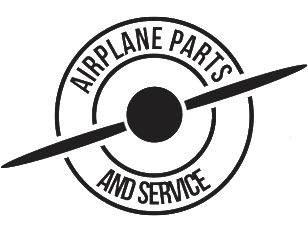Flying High: Simple Tips to Keep Airplanes Healthy in the Sky
Ever wondered how airplanes stay safe and precise in the sky? How do experts make sure the skies are always clear, and flights go smoothly?
Let’s reveal this secret today. Let's dive into the world of airplane maintenance for some answers.
In this guide, we're going to uncover the secrets of taking care of airplanes. We'll talk about routine checks, preventive measures, and the important role of good quality parts. Ready for a simple takeoff into the basics of keeping our skies as clear as can be?
Routine Checks: Keeping Airplanes Healthy
-
Pre-Flight Inspections
Before every flight, pilots and ground crews give airplanes a close look. They check important things like the landing gear, control surfaces, and engine systems. If they find anything wrong during these checks, they fix it right away to avoid problems in the air.
-
Regular Fluid Checks
Airplanes need fluids like engine oil, hydraulic fluid, and fuel to work well. Checking these fluids regularly is important to prevent issues with the engine or controls. Fixing any leaks or problems quickly is crucial for keeping airplanes in good shape.
-
Avionics Systems Testing
Airplanes use advanced systems for navigation, communication, and surveillance. Regular tests make sure these systems work smoothly, making flights safe and efficient.
-
Structural Checks
The overall structure of an airplane is crucial for its safety. Regular inspections include checking the wings, tail, and fuselage for any signs of damage or wear. Keeping the structure strong ensures a smooth and secure journey through the skies.
Preventive Measures: Keeping Airplanes Going Strong
-
Scheduled Maintenance Programs
Airlines and airplane operators follow strict maintenance schedules. They regularly check, replace parts, and overhaul systems based on how much the airplane has flown or the calendar time. Following these schedules helps prevent unexpected breakdowns.
-
Corrosion Prevention
Airplanes face weather and elements that can cause corrosion, which weakens the structure. Regular cleaning and special coatings help prevent this. Storing airplanes in hangars when not in use adds an extra layer of protection.
-
Environmental Considerations
Airplanes flying in different places face unique challenges. Extreme temperatures or exposure to saltwater can cause problems. Special measures like de-icing and regular checks for weather-related wear and tear are important for good maintenance.
The Role of Quality Parts: Making Airplanes Reliable
-
OEM vs. Aftermarket Parts
Using parts made by the original airplane manufacturer is a good idea. These Original Equipment Manufacturer (OEM) parts fit perfectly. While aftermarket parts may be cheaper, they might not be as good. Finding the right balance between cost and quality is important.
-
Traceability and Certification
Making sure replacement parts come with the right paperwork and certification is crucial. This ensures the parts meet high standards and have been tested well. Checking if parts are genuine is important for keeping airplanes safe.
Conclusion
Taking good care of airplanes is key to safe and reliable flights. By doing regular checks, preventing problems, and using good quality parts, airplane operators keep their fleet in great shape. Ready to embark on a worry-free journey through clear skies? Remember, proper maintenance keeps the wings soaring high. For top-notch maintenance services that guarantee a smooth and safe flight experience, contact us today. Safe travels!




